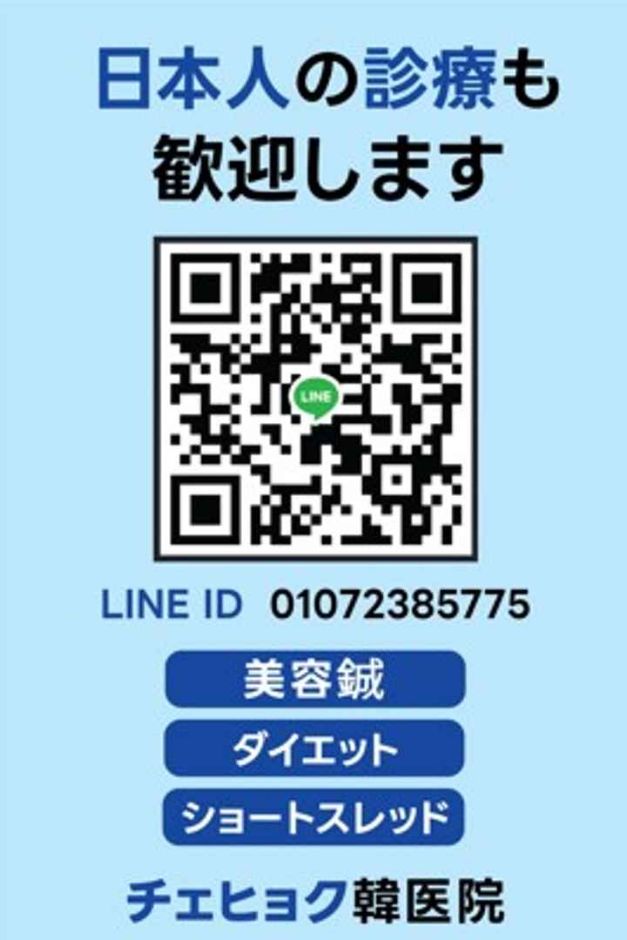Choi Hyeok Korean Medicine Clinic (최혁한의원)
5.1Km 2025-10-23
(1st Floor), 52 Yangnyeongdong-gil, Dongdaemun-gu, Seoul
Choi Hyeok Korean Medicine Clinic is particularly popular among Japanese visitors. Words about our affordable prices, friendly services, and dedication of the chief and the staff have spread in Japan, which has attracted over 2,000 Japanese visitors to the clinic annually. We offer an extensive array of services, including skin care, wrinkle removal, bloodletting acupuncture, weight-loss herbal medicine (hanyak), lipolysis acupuncture, gongjindan, kyungokgo, and “Magic Powder.” We accept appointments for wrinkle therapy on Sundays. We deliver hanyak to patients’ hotels if they are not too far away. We also ship to patients’ homes in Japan. You are always welcome to contact us on Line or Instagram.
Seoul Gyeongdong Market (서울 경동시장)
5.1Km 2024-12-03
3 Gosanja-ro 36-gil, Dongdaemun-gu, Seoul
As the nation began to recover from the aftermath of the Korean War, farmers from the northern Gyeonggi-do region and Ganwon-do gathered around the old Seongdong Station (renamed ‘Hansol Donguibogam’) to sell their produce and wares. The farmers’ impromptu gathering on the fallow farmland to make their transactions soon led to the birth of a new marketplace. With the recent remodeling of the market, including the long-neglected Gyeongdong Theater, the place feels totally renewed and full of energy. Thanks to the renovation and diverse food stalls, the place is always bustling and filled with people.
Starbucks Gyeongdong Market (스타벅스 경동1960)
5.1Km 2024-12-27
3 Gosanja-ro 36-gil, Dongdaemun-gu, Seoul
Restored Gyeongdong Market space and the 5th community store for a win-win relationship with local economy
This 5th Starbucks Community Store is housed in a restored theater in Gyeongdong Market. The store has a win-win agreement with local merchants. Starbucks created a multiple cultural space in collaboration with LG Electronics such as LG Gold Star Radio Refresh Center. Every week, local artists and college students present culture and art performances on the stage that recreated the theatre concept. To offer a special experience suitable to an old theater, Starbucks developed the Retro Theater-like CND. For differentiated customer experiences, the store sells store-baked crafted food and exclusive merchandise.
CheongKwanJang - Dongbuichon Branch [Tax Refund Shop] (정관장 동부이촌)
5.1Km 2024-04-17
1F, 245, Ichon-ro, Yongsan-gu, Seoul
-
G-line Book Street (경의선책거리)
5.1Km 2024-03-19
35 Wausan-ro 37-gil, Mapo-gu, Seoul
+82-2-3153-8353
G-line Book Street spans approximately 250 meters from Exit 6 of Hongik University Station to Wau Bridge, where the old train tracks remain intact. It serves as a prominent cultural hotspot in Hongik University, housing various bookstores and cultural spaces selling books on diverse topics. Independent bookstores, children's bookstores, specialty bookshops, and art galleries converge in this area, offering a rich tapestry of literary experiences.
Eye On Optical - Hanyang Univ. Branch [Tax Refund Shop] (아이온안경 한양대)
5.1Km 2024-04-17
#101, 30, Majo-ro, Seongdong-gu, Seoul
-
Olens - Hanyang Univ. Branch [Tax Refund Shop] (오렌즈 한양대)
5.1Km 2024-04-18
1F, #3, 4, Sageundong-gil, Seongdong-gu, Seoul
-
CheongKwanJang - Seonghaengdang Branch [Tax Refund Shop] (정관장 성행당)
5.1Km 2024-04-18
1F, 465, Gosanja-ro, Dongdaemun-gu, Seoul
-
LikeU [Korea Quality]라이크유[한국관광 품질인증]
5.1Km 2023-05-23
53, Wausan-ro 35-gil, Mapo-gu, Seoul
+82-10-4244-0608
LikeU Guesthouse is adjacent to Exit 7 of Hongik University Subway Station in Mapo-gu, Seoul. Guestrooms have a washing machine, cable TV, table, and chair, and there’s a microwave, induction hob and refrigerator in the kitchen. The owner lives in the same building, so you can borrow items you need during your stay. Free parking is available. The guesthouse is on the 5th floor, and there is no elevator.
Suite Room [Korea Quality] 스위트룸[한국관광 품질인증]
5.1Km 2023-05-23
53, Wausan-ro 35-gil, Mapo-gu, Seoul
+82-10-4244-0608
Suite Room Guesthouse is right by Exit 7 of Hongik University Subway Station in Mapo-gu, Seoul. Guestrooms have a washing machine, a cable TV, and a table and chair, and there’s a microwave, induction hob and refrigerator in the kitchen. The owner lives in the same building, so you can borrow items you need during your stay. Free parking is available. The guesthouse is on the 4th floor, and there is no elevator.



![CheongKwanJang - Dongbuichon Branch [Tax Refund Shop] (정관장 동부이촌)](http://tong.visitkorea.or.kr/cms/resource/24/2888324_image2_1.jpg)
![Eye On Optical - Hanyang Univ. Branch [Tax Refund Shop] (아이온안경 한양대)](http://tong.visitkorea.or.kr/cms/resource/77/2878777_image2_1.jpg)
![Olens - Hanyang Univ. Branch [Tax Refund Shop] (오렌즈 한양대)](http://tong.visitkorea.or.kr/cms/resource/80/2878780_image2_1.jpg)
![CheongKwanJang - Seonghaengdang Branch [Tax Refund Shop] (정관장 성행당)](http://tong.visitkorea.or.kr/cms/resource/89/2888889_image2_1.jpg)
![LikeU [Korea Quality]라이크유[한국관광 품질인증]](http://tong.visitkorea.or.kr/cms/resource/01/2557401_image2_1.jpg)
![Suite Room [Korea Quality] 스위트룸[한국관광 품질인증]](http://tong.visitkorea.or.kr/cms/resource/66/2950566_image2_1.jpg)
 English
English
 한국어
한국어 日本語
日本語 中文(简体)
中文(简体) Deutsch
Deutsch Français
Français Español
Español Русский
Русский